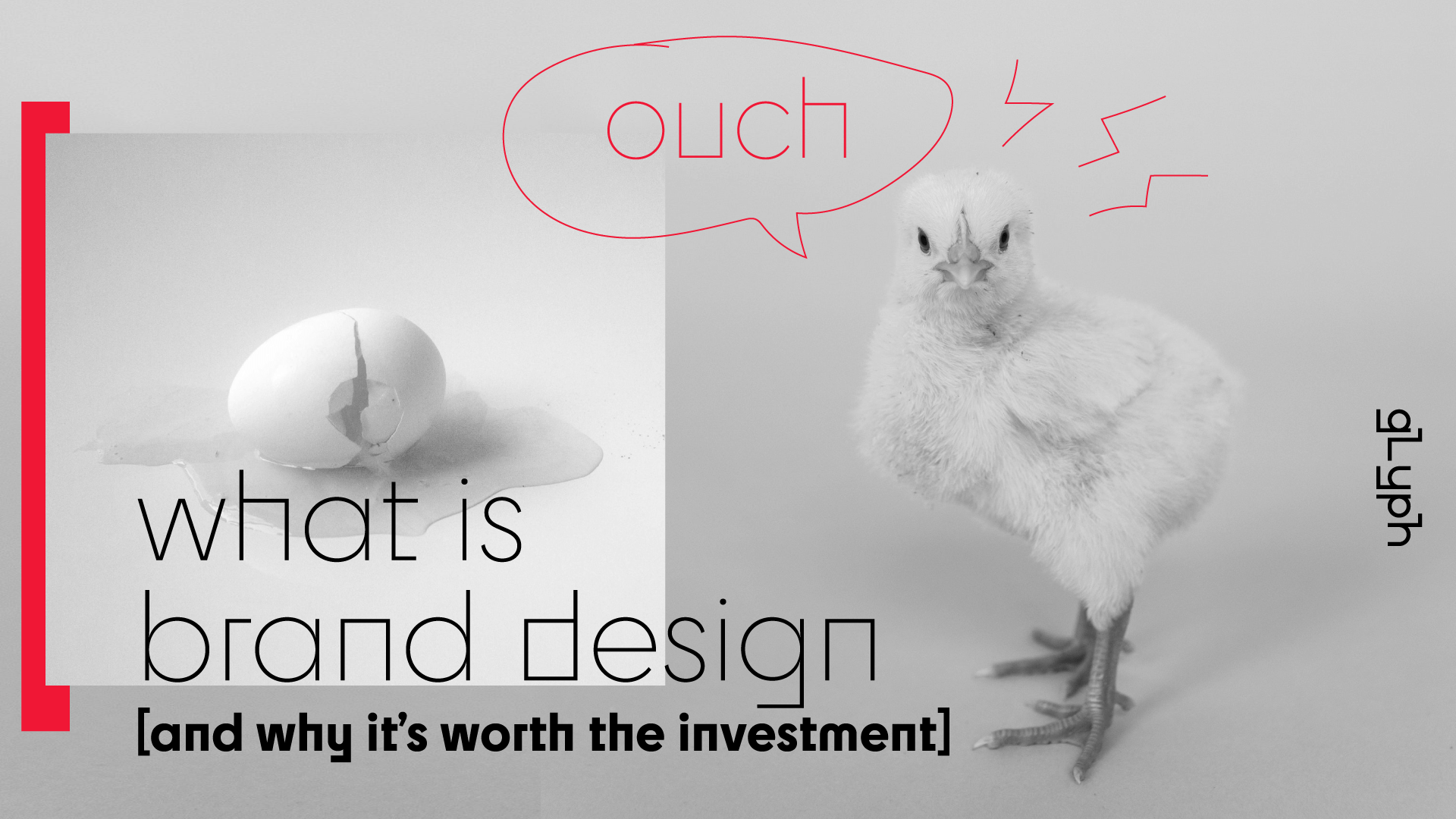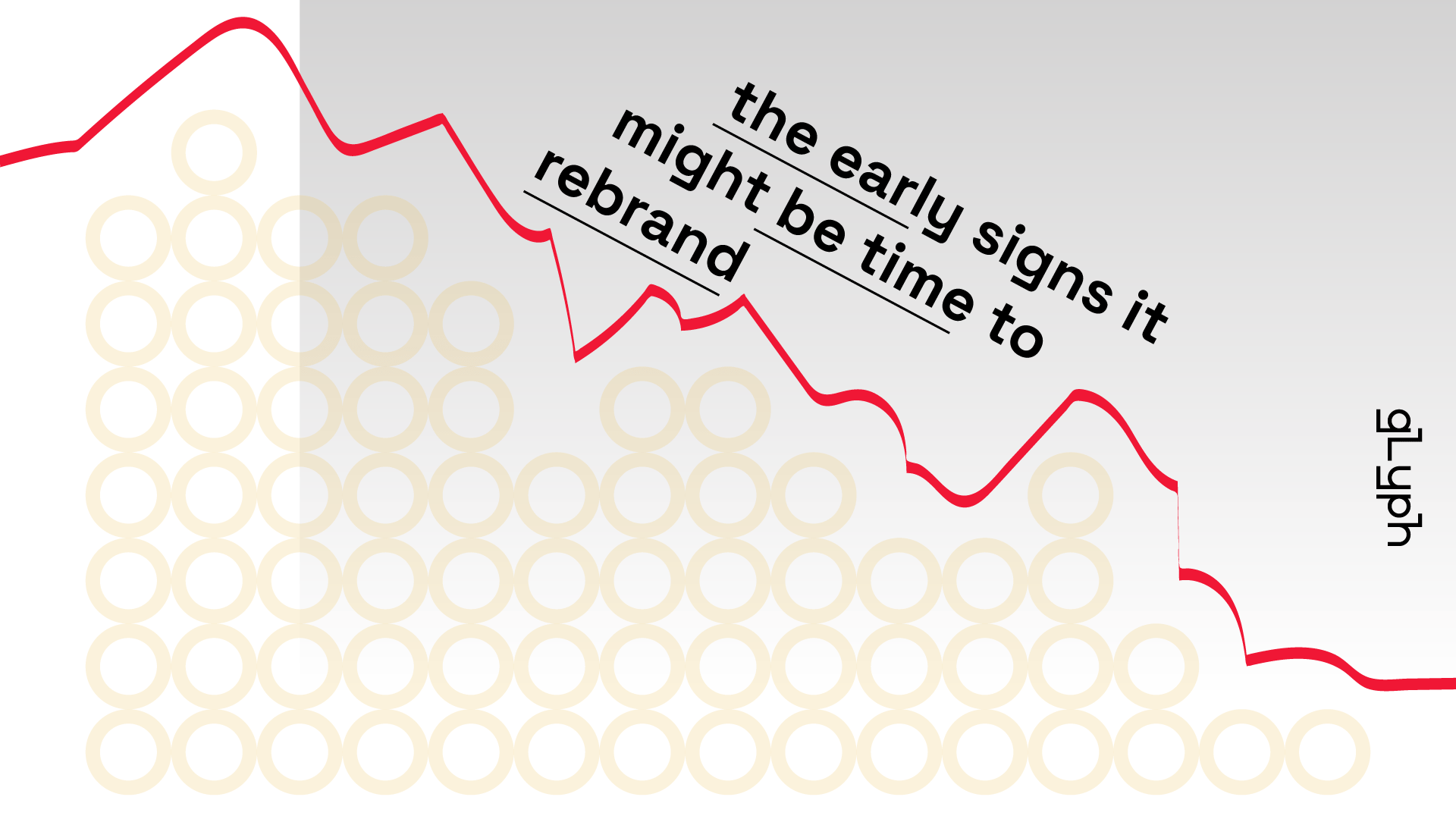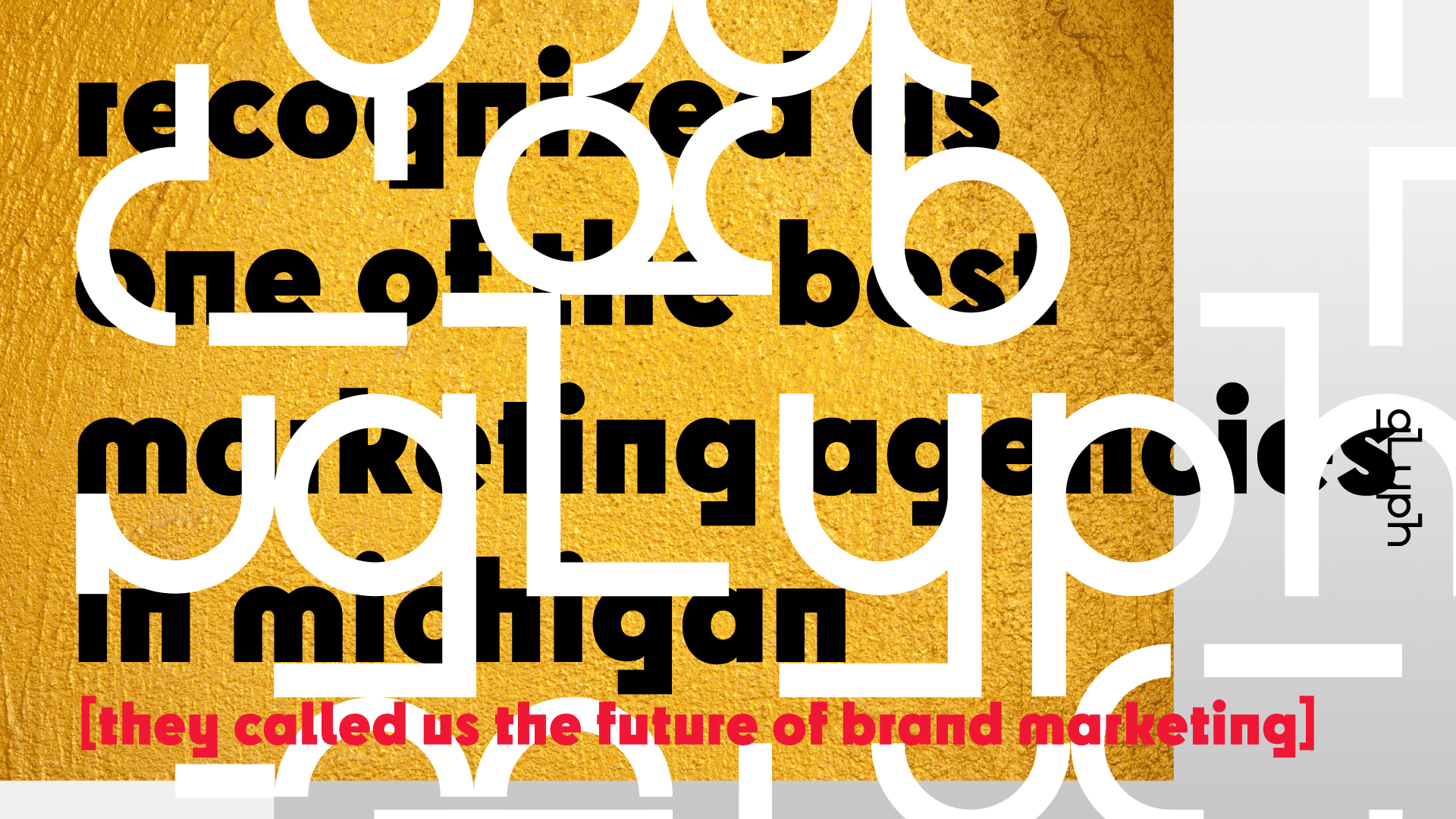People don’t buy because of a logo. They don’t become repeat customers because the colors are perfect. Similarly, they probably don’t choose you over a competitor because you had the best font.
These things, on their own, are usually not the pivotal difference that will have customers lining up to buy. So what exactly does help your audience become a customer? Say “Hello” to Brand Design - the tanglible part of Branding that seeks to provide customers with the perception they need to form opinions and bonds with you.
It's important to note that this perspective is a little aggressive and it's uniquely our team's perspective. There is a seperation between Graphic Designers and Brand Designers. A logo built without Brand Positioning strategy is not Branding, that's Graphic Design.
To create a Brand that refuses to be ignored, you need to intentional Visual Identity. We are going to dig into the common elements of Brand Design, delve into questions surrounding Brand Identity, and explore some dependable tips coming from an national award-winning design agency [that’s us].
Most importantly, we are going to explain why investing in more than a logo can help you win more than a customer. It can win you a deliverable paid back many times in full.
overview
- What Is Brand Design
- Core Elements of Brand Identity
- Developing Your Brand Identity
- GLYPH’s 7 Brand Design Tricks
- Takeaway
What Is Brand Design?
Brand Design is the process of crafting an expansive and consistent Visual Identity that represents… well, your brand.
Your Brand’s signature look and feel is something, that if excellently composed, is instantly recognizable in a crowded market landscape by demonstrating both it’s positioning and personality.
How do we make Brand Design relevant? We like to joke with our clients: “What came first: the chicken (design) or the egg (strategy)?” Hint: we aren’t designing the chicken. We spend the majority of our time upfront to design the strategy that allowed the chicken to come into existence.

Consumer Personas are one of the single most revealing exercises [and one of our favorite workshops] to uncover customer strategy.
There are many great logos that weren’t built intentionally and still do a functional job. However, a strategic focus will allow you to surpass a design built on inspiration with a unified visual look that more clearly represents you and your audience.
In conclusion, this makes the most effective Brand, one that is built with purpose. You must have an end goal in mind during your discovery and crafting phase. This will ensure you develop a design that is both purposeful and representative of you and your audience.
“It is only by association with a product, a service, a business, or a corporation that a logo takes on any real meaning. It derives its meaning and usefulness from the quality of that which it symbolizes.“
Core Elements Of Your Brand’s Visual Identity
Brand Design is divided into two accomplishments. Firstly, the research, identification, and creation of the foundational Brand Strategy. This provides a base of information that has been given purpose to guide each individual element as a group.
Secondly, the creation of the Visual Identity such as the logo, colors, typography, usage guidelines, illustrations, and art direction. Think of individual trains working together as part of the larger subway hub for a city. Your Brand Design is the City Subway System while each component of your Identity is working together to support the design identity – not crash it.
When Brand Design is effectively executed, your market insights come to life in Consumer Touchpoints such as a Website, Digital Marketing Collateral, Print Packaging, Consumer Presentation, Signage, and more. This is where each individual element works together to create harmony. You can’t put all your time into typography, or picking the right color palette, and leave the other components to chance.
Remember, a Brand gains its power from the total strength of individual elements working together. Let’s take a look at each of the main ingredients you’ll be working with:
logo
While a logo isn’t a Brand by itself, it’s usually the core symbol for a one. As the aesthetic symbol of a Brand, it’s often the first thing people recall when they think of an organization. In addition, a logo has the power to instantly communicate a Brand’s core ideals – even though it’s one of the smallest elements of your Brand Design.
branded typography
The system of fonts and typefaces that represent a Brand are a careful and unique design system of it’s own. Because they are meticulously and intentionally designed, typefaces bring a distinct, ready-made personality to Brand Design.
Personally, typography holds a special place in our hearts. To create a lasting Brand Identity, we intentionally build each element around the Brand Foundation and often create hand-made, bespoke typography for our clients and their projects so every element boasts the same, core design.
brand colors
Colors might be one of the most essential elements to a Brand’s Visual Identity. Each color has a distinct impact on the psychology of a Brand’s audience and should be picked based on the personal tastes of the business as well as the expectations of the audience. Understanding that impact is key to getting the most out of colors in Brand Design.
The focus on individual branded colors and extended palettes is a purposeful exercise that has to be just right to fit the theme of your values and theme. A soothing day spa will not be picking aggressive colors and favor relaxing, soothing colors. However, a bank, with a completely different purpose in mind, might pick the same colors as the spa. They have a different audience but want to evoke the same purpose in their outward presentation.
Many businesses hold trademarks on their specific color, or color pairings, such as DeWalt Yellow and Black, John Deere Yellow and Green, Target Red, Tiffany Blue, T-Mobile Magenta, Post-it Canary Yellow, UPS Brown, and Cadbury Purple.
brand patterns
Patterns are the intentional repetition of shape or form. This systemic approach means they can be easily mass produced and massively recognized. It’s key to remember that textures and patterns are supporting elements. They should enhance the message you wish to convey, never distract from it.
The creation and dedicated use of Patterns might be our favorite (and most advantageous) element in Brand Design. You can see the use of expansive patterns for Brands like Louis Vuitton, Burberry, and Coca Cola.
A personal favorite example of ours is Doritos, who famously removed their logo from their packaging in 2019. This bold exercise proved their set of styling was understood and loved by customers, even without a logo displayed.
layout / grid systems
The foundation of effective Brand Design is the way its visual elements are organized and positioned in relation to each other. This is what is known as Layout.
Layout both gives meaning to design and makes it visually appealing to app appropriate audience. It provides balance from page to page and even from print to webpage. In addition, a consistent grid system implements an intuitive hierarchy that makes it easy to navigate visual communication.
art direction
A Brand that is instantly recognizable by it’s audience is vast. When crafting a Brand that is meant to connect and last, it has to consider and craft rules for things like Print Direction, Interactive Experiences, Photography Direction, Videography Direction, Illustration Styling, Icongraphy Design, and many more distinct and purposeful elements.
You can see examples of Art Direction in how different industries physically look different. For example, a sports brand might look dark, powerful, gritty, and loud. Inversely, a tech company might look clean, sharp, bold, and loud. Both Brands might share some characteristics while still being fundamentally different brands and in completely different industries.
sensory experiences
Often, a Brand has multiple facets where a customer might physically engage such as movement, smell, sounds, and even taste. As we have discussed, every individual element plays a major part in ensuring the total experience works. Sensory Experiences are not to be underestimated. They have a huge impact on the experience, like the use of sounds in restaurants and smells in fashion boutiques.

Developing A Profitable Brand
Your Brand is a lot more than what people see from an initial glance. Brand Identity is what we passionately call the metaphorical tip of the “Branding Iceburg”. This means the little bit of design you see is supported by the impactful strategy that lies below the surface.
To understand how you can influence customers, remember that all lasting Brands start with research. Lots and lots of research. Firstly, you must understand who you are and what you’re offering. But that’s only one side of the coin. You must also include things like buying motivations, market challenges, and even lifestyle/beliefs in your calculations.
We see Brand Design as a method to contain and shape the expectations of customers. Too often, an organization interferes with their own design by including themself as a customer. Appealing to your target market ensures that you more closely match them. That means more sales from more in-tune customers.
Thirdly, a good design must be continuous over the entire customer journey. From the beginning of a customer’s research phase, to start of their loyalty phase, your design must not derail shoppers. For instance, you wouldn’t invest in a winning race car but force yourself to never drive above 35. Every visual and verbal branding element must be carefully chosen to have a clear, consistent, and functional role.
Lastly, understanding your chosen market niche and where you differentiate yourself from competition will help you command a higher authority. Remember, a niche isn’t based on demographics like a customer’s age. It’s based on a set of behaviors that a certain age-group might share.
GLYPH's 7 brand design tricks
One of our agency beliefs is that “Deeper Foundations Create Taller Towers”. Building your Brand Strategy will only ensure that your design works – and works across the scale of a Brand. For instance, your personal vote might be to choose green for your Brand Design.
However, if your strategy dictates that your Brand is reserved and prestigious with a soothing and upscale environment, you might need to rethink your core colors and even the types of patterns and typography you pair with it. This enables customers to more quickly form the right perception.
As a team, we know that investing in something like Brand Design can seem like one of the lowest priorities. But don’t take our word for it, Steve Forbes himself said “Your brand is the single most important investment you can make in your business”.
After working with so many amazing organizations across the world, we have seen the direct impact that tailoring a large set of Identity guidelines can have on revenue. Here are our 7 tips and tricks that will help you shortcut the competition.
01. Keep it simple. Nothing more needs to be said here. It quite literally pays to not dilute the impact of your Brand with competing ideas and distracting concepts.
02. Prioritize whitespace. Nothing hurts the recognition of Brand Design more than when there are too many details fighting for their hierachy.
03. Avoid gimmicks. We know that puns feel clever to sneak in, but it usually undermines the authority and relevance of your Brand. Go for accuracy that works every time.
04. GLYPH’s Hitchhiker Rule. A personal rule of our own creation, your Logo Design should be recognizable [even if it’s not 100% legible] at the size of your thumbnail from your arm’s distance away.
05. Less is more clear. Using less colors and slimmer typography system gives you more control and fast recognition when your branded elements are used.
06. Small logo/big branding. We like to create Logos that are elegant because of their simplicity. We prioritize an expanded Visual Identity and simpler logo to ensure the look and personality is always consistent and represented.
07. Don’t skip the personality. Your audience should feel like they are engaging with a Brand of depth and substance. It all starts with sharing things like motives, purpose, and passions.
The Takeaway
You’ve got one chance to make an impression on potential customers. Make sure your Visual Branding allows you to takes advantage of that opportunity.
A unified Brand Design can make the difference between a business that is just getting by and one that dominates its market. It allows you to instantly set a tone with your audience and even tell the [right] customers that you are worth looking investing their time and money into.
Remember: Brand Design is more than a logo – it’s everything the supports and surrounds a logo. Branding that wins, does so because it’s the sum of all your strategy made visual.
Utilizing the process of a cohesive Brand Design will ensure you broadcast a consistent a recognizable look. Your goal should be to stand out in crowded marketplaces like social media marketing and website experiences.
In summary, Brand Design is an investment that continuously pays you back over the life of your company. It allows you to demand higher prices for your offerings, attract more enthusiastic shoppers, build a loyal customer base with a positive relationship, and navigate through competition by owning a premium niche in the market.
GLYPH is an internationally-recognized brand strategy and brand design agency and consultancy. Our team has been at the forefront of innovating brand strategies and have frequently been rated as one one of the best branding agencies in Michigan.
Is a rebrand on your horizon? Do you believe your business could be more competitive after implementing a new postioning strategy? Grab a cup of coffee with us (in person or virtually) and let's talk about your goals.


